“Whichever bridge you build, you’ll have to cross it."
Dargwa proverb
|
|
Bridge. “Spirit without a name, Essence ineffable, I live with life without A form that mind can shape… I follow giddily The worlds as they revolve. My eye embraces all The universe at once. I know of regions where No murmur ever comes, And where unshaped stars Hope for a breath of life. I am the bridge that spans The dread abyss; I am The unknown ladder that Unites the sky to earth. I am the wondrous ring Invisible that binds The world of matter to The larger world of mind. I am that spirit free, Essence unknowable, Perfume unknown, of which The poet is the vase!” Gustavo Adolfo Bécquer |
In former times, Heaven and Earth, the two worlds symbolized by two riverbanks or seashores were integrated. Yet, once, as legends say, abysses and water appeared in between and separated them. Nonetheless, a single path remained, which connected the two sides, the mundane world and the heavenly world. The path is narrow and dangerous, but it’s the only one available, and it runs over a bridge.
The bridge image is similar to the image of an axial pillar or the world tree connecting heaven and earth and simultaneously maintaining their separation; thus it may also be regarded as a vertical or the axis mundi. A vertical bridge connects the earth not just with the higher world, but with the lower one, too. At the bridge leading to the lower world, a guard is often standing (e.g., a zoomorphic creature), who lets deceased (or living who have dared to visit the kingdom of death) pass, in exchange for a certain recompense, solution of a given riddle, or successful withstanding of a given test. At that, the downward bridge is one of rare images. There are more frequent images of the bridge along which souls of deceased get to paradise (the direction of such bridge is not always identified). In this respect, the bridge symbolism is identical to that of a ladder. Just like the world tree, ladder or axis mundi, the bridge connects different planes of existence. The side which the bridge runs from is our world, while the other side is the primordial world, the world of God, the world of genuine reality, the area of immortality.
The bridge crossing is similar to transfer from one plane of existence to another, transition from the world of living creatures to the other world, in particular through water that separates the mundane world from the beyond. The bridge is a substitute for a ferryman (boatman) who transports souls in similar world systems. According to Scandinavian myths, all souls will have to cross this bridge after death. Some of them will take the road to the underground world of Hel, and some will walk along the rainbow to Valhalla located in Asgard, the land of gods.
In the primordial state (the Golden Age) people could cross this boundary of their own free will, since there was no death as such. Once death appeared, the passage (the bridge crossing) became possible only after one’s death or in a mystical state of consciousness during initiation ceremonies.
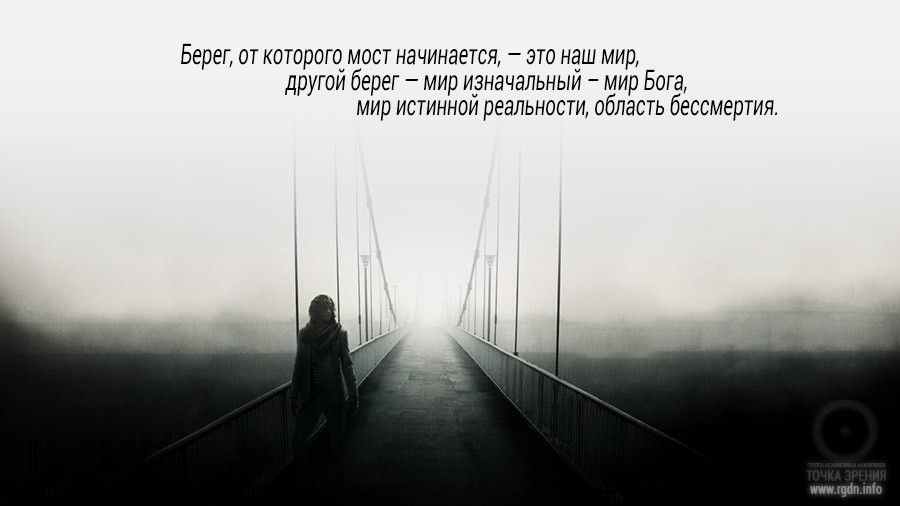
In myths and fairy tales such passage could be carried out not only by people who died, but also by solar characters. By crossing the dangerous bridge a person proved his/her spiritual maturity and returned to the lost paradise. The bridge between the worlds is sometimes represented as a rainbow or a heavenly serpent (dragon). Many great heroes in ancient legends walked along the bridge in search of immortality.
The sense of the dangerous passage lies in the link between Heaven and Earth. Undergoing tests and trials, heroes gained wisdom and became aware of the great unity standing behind contrasts of the visible world. For this very reason legends and myths often contain a paradox symbol of overcoming the rational mind limitedness: an eye of a needle, a hair-thin pass, a passage between millstones, etc. Having returned from their journey, heroes restored true and just laws on the earth, giving back the lost integrity to the world, and granting people hope and genuine sense of life.
On their way, mythological heroes always faced obstacles, tests, and meetings with guardians of thresholds (borders of the other world). Therefore, a custom emerged to charge fee on bridge crossing, decorate entrances to this special space with arcs, tell about tests and trials by means of signs, emblems or sculptures. Such tradition existed in Ancient Rome, China, Europe, America, etc. for centuries.
On the Guelder-Rose (Kalinov) Bridge, Russian bogatyrs (warriors) fought with a serpent. Under the hair-thin bridge, monsters waited for every wayfarer who lost equilibrium. In Norse myths the bridge shook, when an immortal being was crossing it, and was guarded by a guard who blew his horn if enemy hordes approached.
A bridge in mythology, first and foremost, means a connection between different points of the sacral space. It’s a sort of allegorical improvisation of a so far unknown, unsecured path. The bridge is often constructed in the wayfarer’s face, at the most important and dangerous point of his/her journey, where movement is interrupted, and the threat of evil forces is the most evident, as if on an intersection or crossroads. In its essence, the symbolism of the “narrow gate” and “dangerous bridge” relates to seemingly hopeless situations: one must get to “where the night meets the day”, find a door in a wall, enter the Heaven though a passage that opens just for an instant; pass between two rocks that are permanently colliding or between monster’s jaws. All such mythological images reflect the necessity to overcome contradictions and eliminate polarity characteristic for every human being.
Medieval knightly legends tell about a bridge as “a smooth sword glaring in sunlight”, along which Lancelot must follow to the place where Guinevere’s confined, and the bridge crossing is “full of torments and sufferings”. Crossing of the sword bridge symbolically relates to initiation, which is confirmed by the fact that lions waylaying Lancelot on the other side vanish once the test has been stood.
In ancient Chinese myths, a bridge leading to the other world was very narrow, and sinners fell from it to a muddy stream. A pilgrim named Suan Dzian who brought the Buddhist teaching from India to China had to cross a bridge (a tree trunk). King Mu of Chu dynasty was travelling to Sin Van Mu, Queen of the West, in search of immortality and had to cross a river along a bridge made of fish and turtles.
In Japanese tradition, deities Idzanaki and Idzanami create the earth, standing on the rainbow bridge. They put a jasper lance down into the sea, and thus the first eight islands are created from salty drops streaming down.
In legends and traditions the bridge, which is frequently likened to a beam of light, is often described as blade-thin or, if made of wood, as consisting of a single tree trunk. Such image indicates the danger of the path, while the latter is the only path available. Not everyone is able to complete the pass, and only a few can do this by their own efforts, unassisted, for there is always a danger when a person is in transition from one state to another. This particularly relates to the dual (“wholesome” and “unfavourable”) meaning of the bridge. It should be noted that the bridge double semantic sense is also a consequence of the fact that the bridge may be crossed in two opposite directions, while it must be crossed in the only proper direction leading from this side to the other side; and any backward movement means danger which should be avoided, except in the only case: a being that has already liberated itself from conventional material existence may “freely penetrate” all worlds, and any backward movement for such being is nothing, but an illusory semblance. In any case, a part of the bridge that has already been covered inevitably “passes out of sight” as if it has ceased to exist, just like the symbolic ladder is always considered having its base in the same area where the one walking up the ladder currently is. Its lower part disappears for the wayfarer as he/she is ascending. Until a person reaches the primordial world from where he/she can descend to the matter without being subject to its influence, his/her realization can only take place as ascension. And for those who would tie themselves with the way itself, regarding means as their target, the way would surely turn into a barrier instead of leading to liberation. This means it’s necessary to continuously eliminate all ties binding a person with previous stages of the way, so that eventually the axis would contract to a single point containing everything and being the centre of integral reality.
Narrow bridges, bridges with blade-sharp edges, sword bridges, etc. symbolize subtle differentiation between contrasts, and lack of space in the beyond sphere. This pass is inaccessible for ordinary physical experience and human sense organs, for it can be perceived only by overcoming the physical with one’s thought and spirit, as it’s described in Upanishads or legends of the Holy Grail:
In those ancient times, the Grail was called the Pharn, which ordinary people interpreted as a sunny shining divine fire, its material emanation. It was mentioned as a sacred source granting and increasing the power and might. It was interpreted as something that helps a person’s soul to cross the bridge leading to paradise. Anastasia Novykh. Sensei of Shambala (Book IV)
The bridge construction or crossing is very often a symbol of the end of one cycle and beginning of the other cycle, the path from the old space and time to the new ones, as if from one life into another, new life. The bridge crossing also symbolizes passage through time and through eternity. In such context, it’s easy to understand folk motives of bridge construction on New Year's Eve, of a miraculous golden bridge with a tree (or trees) and birds, which is to be built in one night, of a tree transformation into a bridge, connection between a bridge and a serpent or nightingale the robber (similar to a monster at the crossing), fortune-telling at or under the bridge, and so on. It is significant that the bridge is crossed (or crossed for the first time) exactly by a hero who often overcomes a monster.
The bridge crossing is similar to passing through Time. The river of days, the river of time, the river of life flows and never stops, taking away everything and everybody. And only the one who stands on the bridge resides in the eternal present, looking at reflections in the water…
The river of time takes beloved away, but beloved still meet on bridges or pass under the rainbow, joining hands and knowing that meetings on the earth are a mere continuation of meetings on star bridges.
А. Krivosheina
We're the bridge across forever, arching above the sea, adventuring for our pleasure, living mysteries for the fun of it, choosing disasters triumphs challenges impossible odds, testing ourselves over and again, learning love and love and love!
Richard Bach. The Bridge Across Forever
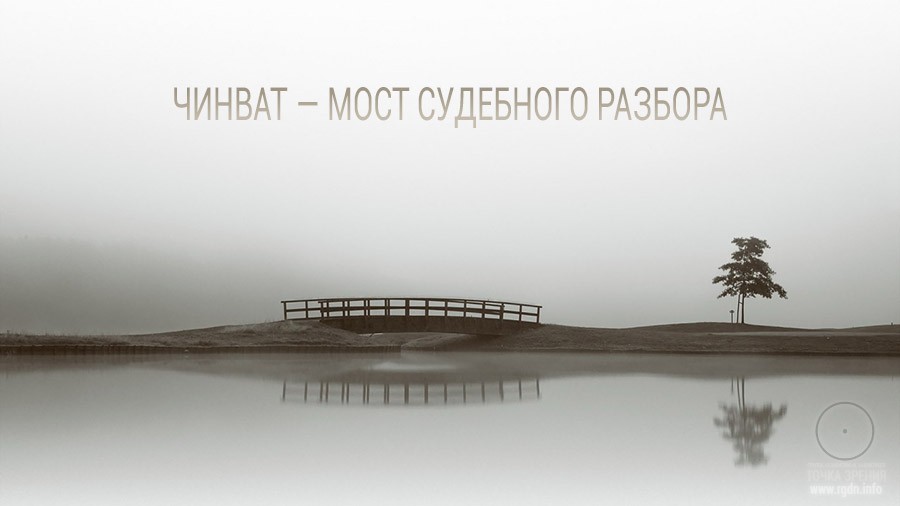
The ancient Indo-Iranian religion of Zoroastrianism (Mazdaism), which still remains the basis of beliefs of Parsee multitudinous religious sect, considered that souls of deceased appear in front of the Bridge of Separation (Chinvat Parvata) along which they could pass to paradise, which became narrow as a razor for sinners and extended for the righteous (the same image is found in some medieval Christian paintings of hell and paradise).
In the later tradition, Chinvat was regarded as “the bridge of judgement” passed on souls of deceased by Mithra, Rashnu and Sraosha. The bridge leads to the JudgementMountain.
“It is like a multifaceted ray; some of its facets are wide as nine lances, while some are narrow and sharp like a dagger blade. When souls of the righteous and sinful come to Chinvat, it turns with its wide facet to the righteous and with its narrow facet to sinners. The more sins a person has committed during his/her earthly life, the narrower Chinvat becomes under his/her feet.”
On the ChinvatBridge, dogs neither bark nor growl on deceased sinners; on the contrary, they meet them… in silence. Whereas they support righteous people with their yelp and howl, probably for them to feel safe and secure, just like at home.
Moreover, at the ChinvatBridge a deceased is met by Diana, the true Faith, who is entrusted to be the judge of person’s words, thoughts and deeds. In front of a virtuous soul she appears as a beautiful, “stately, cheerful, tall maiden”, while a villain sees her as horrible and disgusting old woman.
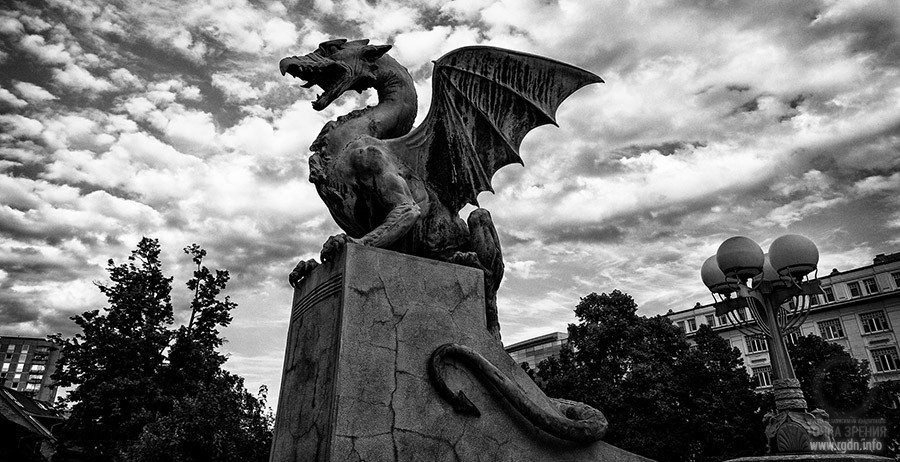
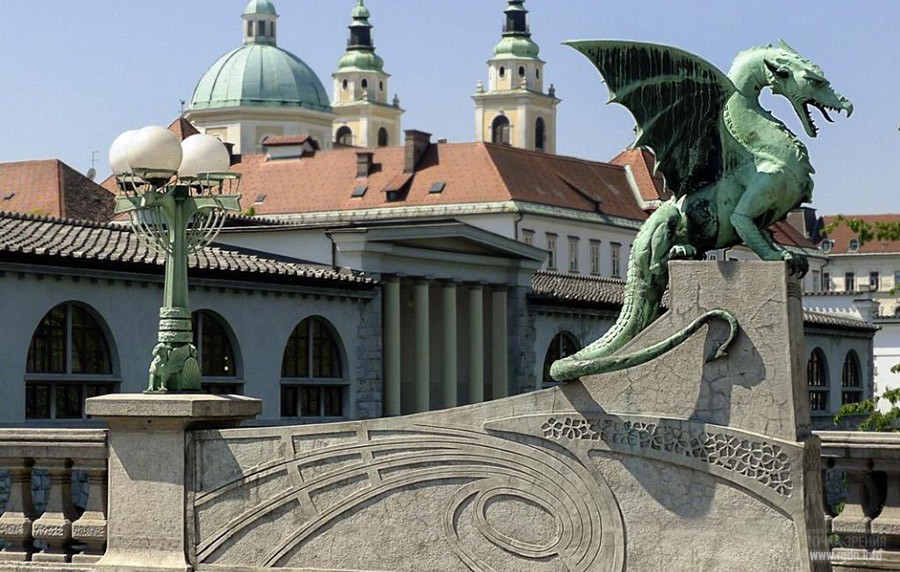
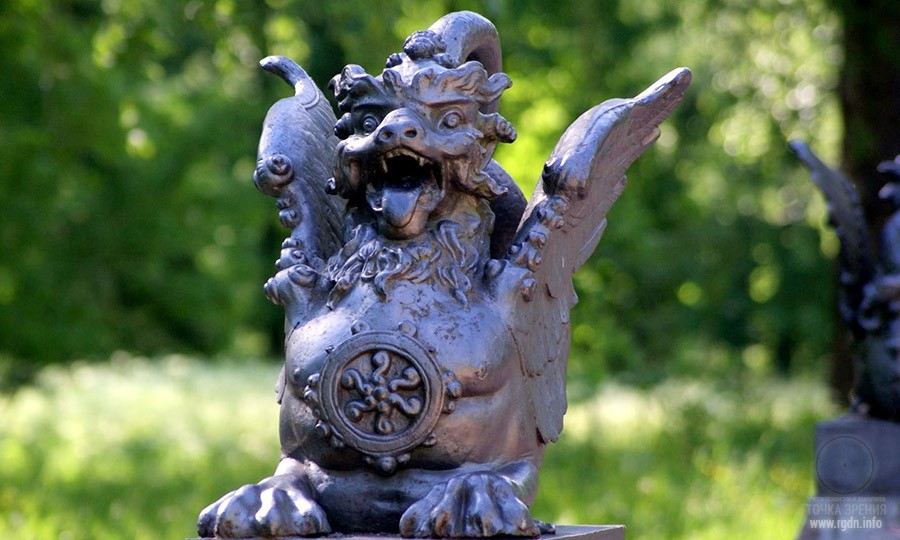
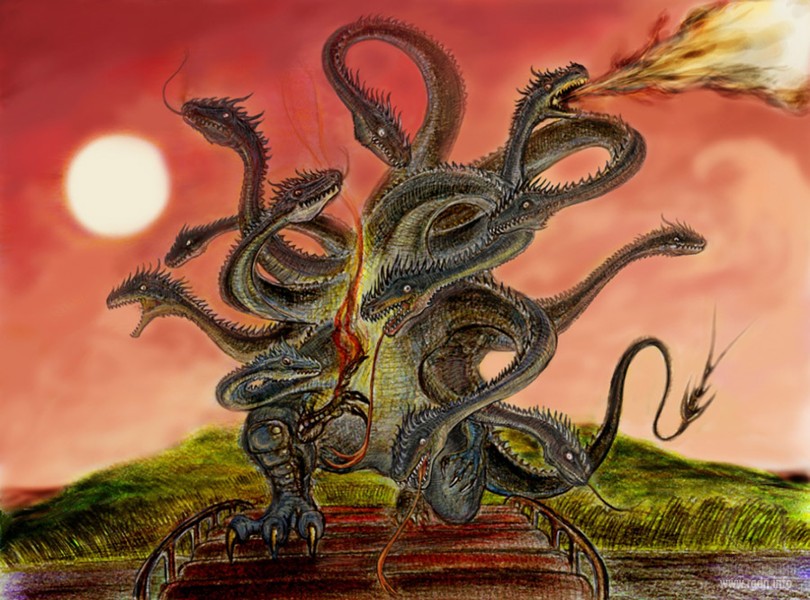
And “she is accompanied by sanctity, truth, power, and might. The maiden precipitates malignant souls to the Darkness; whereas souls of pure people by her power get to the other side of inaccessible HaraBerezaitiMountain. The maiden accompanies righteous people along the ChinvatBridge, joining them to the assembly of heavenly Yazats”.
The Chinvat Bridge (unrhymed translation)
Life is over, there is no way back,
And the ChivatBridge is waiting ahead.
Whether you are righteous or guilty,
The ChivatBridge will judge us all.
A magical stream of the eternal river,
West and east, south and north.
Thousands of long roads are absorbed
By the eternal river magical flow.
Have you chosen light or darkness?
Do you know whom you’ve given your soul to?
The eternal flame in the glitter of mirrors
Will highlight those who have chosen You...
A righteous won’t be seized with fear.
The path of sinful is acute as a knife.
Flame is dancing in sacred bonfires.
The one who’s been honest will forget fear.
The dawn is bright, the decline is colourless.
A thousand of penalties, and a million rewards.
I know: once I pass the ocean of barriers,
I’ll meet you at the ChinvatBridge.
Eugenia Viracheva
In Islamic eschatology, As-Sirāt (Arabic: الصراط) is a bridge located over the fiery underworld. The SirātBridge is narrow and does not exceed the human hair or sword blade thickness. The word Sirāt is mentioned more than forty times in the Koran as the meaning of “the direct path” (Arabic: الصراط المستقيم as-Sirāt al-mustaqīm). Shiites believe that Koranic as-Sirāt al-mustaqīm means faithfulness and devotion to Allah. Legend says, on the Judgement Day all people will have to cross the SirātBridge. Faithfull Muslims will cross the bridge “with lightning speed” and reach the Kawthar Spring in paradise, whereas unfaithful and sinful will fail to cross the bridge and fall to hell. The Islamic Sirāt Bridge has much in common with the Chinvat Bridge of Mazdaism. In the latter, the good deity Vay leads souls of righteous people along the ChinvatBridge to the place where they belong.
The Bridge depicted in Anastasia Novykh’s works:
The general battle for a person following the spiritual way will take place when an earnest internal work starts, when the person rejects all conventions and truly cultivates inner Love, going straight ahead to God in spite of everything. In plain words, it will take place when he or she approaches the Gate and steps on the single bridge or path (whatever you may call it) leading thereto. In principle, all people achieving a certain level of spiritual maturity have to pass this main ultimate leg, regardless of the exact way they have taken to reach it. In the highest accounts, all these manifold ways are merely different methods of searching that only path leading to the Gate.
“Yet, how would you know whether you’ve found that path or gone in circle to an untrodden forest again?” Max expressed his doubt.
“Don’t worry. Anyone having stepped on that path will feel everything. Moreover, he or she will then be accompanied by signs.”
“Signs?”
“Well, yes, certain indicators in a spiritual guide-book.”
“Could you, please, tell more on this subject?”
“I do can tell you more... I shall omit all those external signs which a person begins to see and understand owing to amplification of his or her intuitive perception, and shall tell only about the principal inner sign that appears when such person steps on that bridge or path, i.e. when he or she enters the final battle with his or her animal nature for the soul supremacy in a given body. This sign appears in a form of head of an ancient reptile, serpent or dragon. But most often people start seeing as if an open-hood cobra is gazing at them. Its gaze is not aggressive, but serene. It looks eye to eye, most likely even at one’s nasal bridge. At that, a person sees its image in front of oneself both with closed and open eyes. At this stage of spiritual way it appears intermittently in front of one’s face even in everyday life. Sometimes it seems to people they start having some haunting hallucinations. A snake shows up or crawls by, now here, now there. Such visions are normal for those who are crossing the bridge.
Everyone surely has their own reptile image. This partly relates to one’s inner imagination, and currently possessed versions from associative memory. And one’s attitude towards that reptile’s appearance is also different. If a person has grown up in a region where a snake is worshiped as a sacred animal, he or she will react more or less tranquilly. Whereas another one, in whom a fear has been instilled from childhood, will naturally feel dread and disgust as the first reaction. Yet, however that may be, when a person overcomes his or her illusions including fear, when he or she completely abandons negativism and becomes aware of the truth, exactly then he or she realizes that the Serpent is only the First Guard. The latter is necessary, because further advancement is possible only under supervision, for at this leg of spiritual way more powerful energies come into force...”
“How powerful are those energies?” Max wondered.
“Well, judge for yourself. A person having passed the First Guard acquires such abilities thanks to which he or she can govern not only natural elements, but people’s destinies as well...”
“Yeah, not bad,” Max said in surprise.
“So, when a person completes, say, crossing the bridge, i.e. wins the final battle, the personal Armageddon, having chained up his or her animal nature, then the Serpent disappears. The person becomes much more sublime and purer spiritually... To put it bluntly, this whole process is just a stage of operation of the hypothalamus centres which we’ve spoken of, up to full or partial inhibition of the negative thoughts centre, the cacodemon. By the way, such process in ancient yoga was associated with awakening and ascent of a dormant serpent along one’s spine up to the “Milfoil” chakran, which is the epiphysis projection.”
Anastasia Novykh. Birds and a Stone
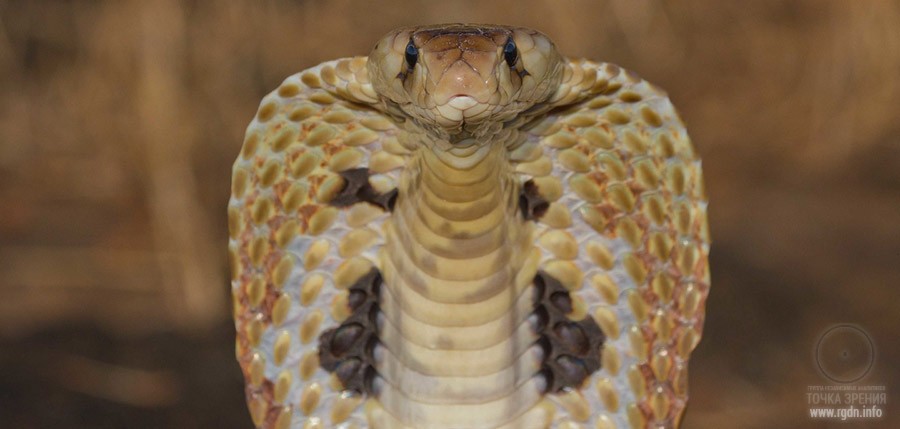
Every human being “builds” his/her own Bridge (path). Some people do this consciously, others unconsciously, for the Bridge is not a visible object or phenomenon of the material world, being a property of one’s internal Way, one’s spiritual search and achievements. “The bridge crossing” in a sacral sense is a difficult and even dangerous path for the one who follows it. Not everyone by far covers this path during his/her lifetime and applies relevant and continuous effort in order to gain Eternal Life in God’s home. However, in the afterlife all people will still have to cross the Bridge they have built for themselves before with their thoughts, words and deeds.
Not all “paths” on the spiritual Way, including those appearing direct, easy and attractive, indeed lead “over the abyss” and help cross the Bridge; most of such paths are false, tangled and extremely twisting.
The direct and shortest Way is found by cognition of the Truth only, the Truth which is within a human being and connects him/her with the world of God; the Truth that is perceived not through mind, but through deep inner feelings. And such Truth is our Soul. When a person learns to hear his/her Soul and endeavours to generate good thoughts, words and deeds in every day of his/her life, growing and manifesting the internal Light, he/she approaches the Soul, and sooner or later, given the proper effort and persistence, “the Bridge construction” gets completed, and the person crosses the Bridge. The Gate of the Truth opens, and the Human Personality merges with the Soul and enters his/her real Home, becoming an immortal part of the Single Whole – the Single God.
It is only possible to become free from death by having perceived the Truth. The Truth is a heritage of the internal. The Way towards the Truth is a heritage of the external. And, only after you pass the Way, you will perceive the Truth and be free from death.A. Novykh. AllatRa
There is only one Way which is the Way of Truth (Asha). All other roads are impassable!Avesta, Vīdēvdād, Fragard 22, Verse 26
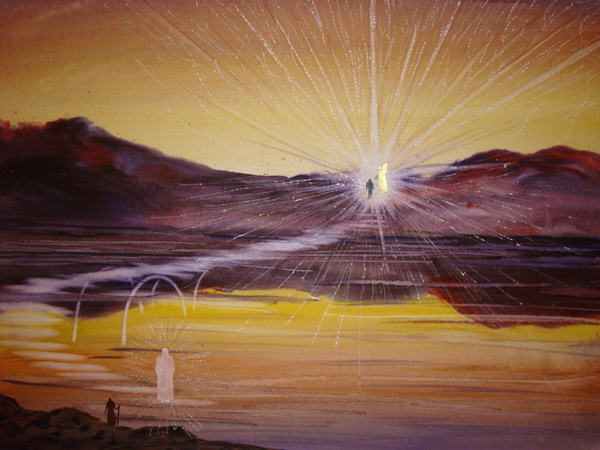
Literature & Sources:
The Book of Symbols: http://www.symbolsbook.ru/Article.aspx?id=329
http://www.bez-granic.ru/index.php/2013-08-04-13-26-15/vse-rubriki-zhurnala/yazyk-simvolov/705-most.html
http://www.newacropol.ru/alexandria/symbols/bridge/
http://www.symbolarium.ru/index.php/%D0%9C%D0%BE%D1%81%D1%82
http://schambala.com.ua/
http://www.e-reading.club/chapter.php/94990/20/Uspenskaya_-_Zoroastrizm_za_90_minut.html
http://www.symbolarium.ru/index.php/%D0%A7%D0%B8%D0%BD%D0%B2%D0%B0%D1%82
Islam: Encyclopaedia. Moscow, 1991
Prepared by: Niva (Russia)
 Chinvat. The Bridge over the Abyss
votes:
366
Chinvat. The Bridge over the Abyss
votes:
366
|


Accidentally found this article and got amazed. I’ve been takling interest in the Chinvat Bridge for several years, and here I’ve found good pieces of information that’s new to me. Thanks:)

Project Aim










Maggy Lewis 25.07.2016 00:04 Reply ↵
Very informative, thanks:))